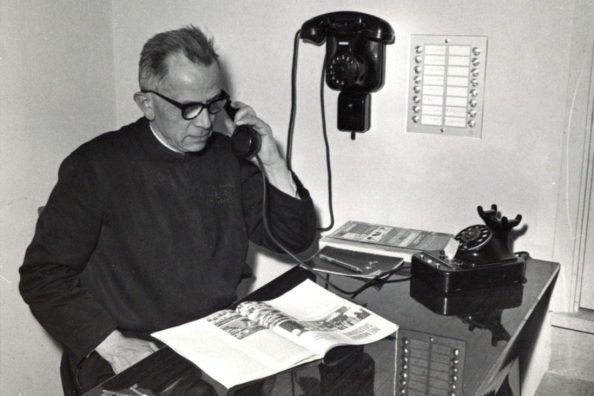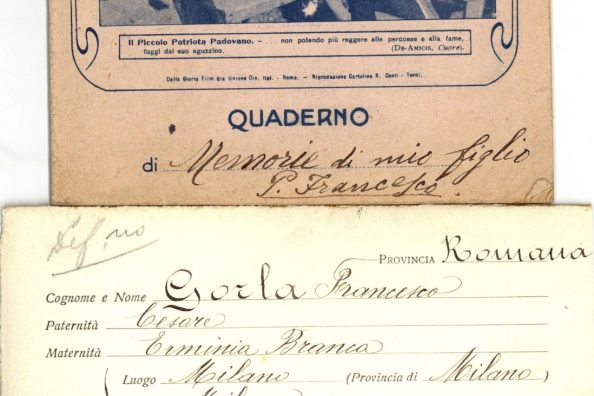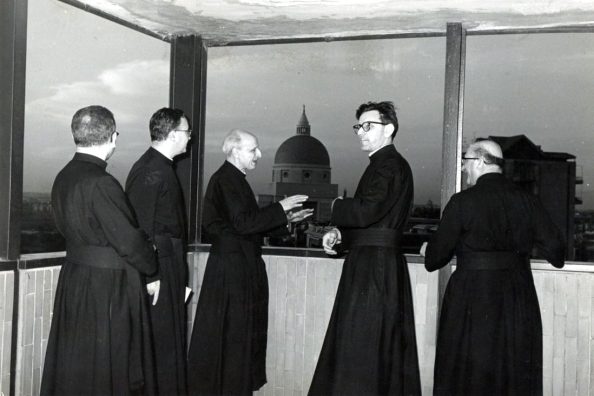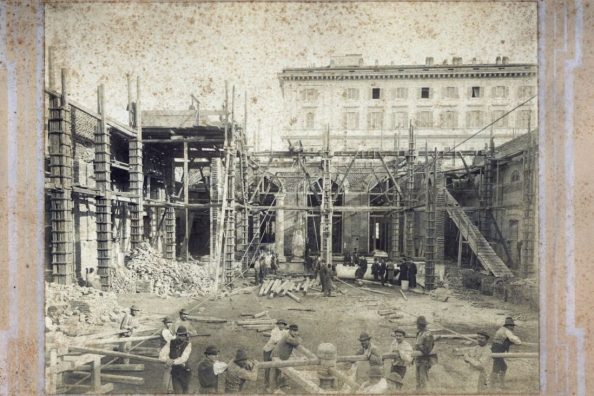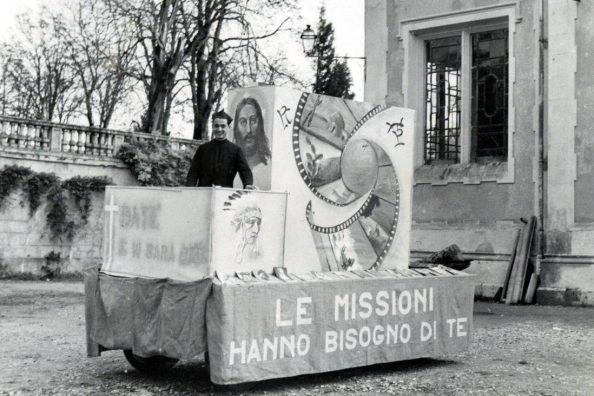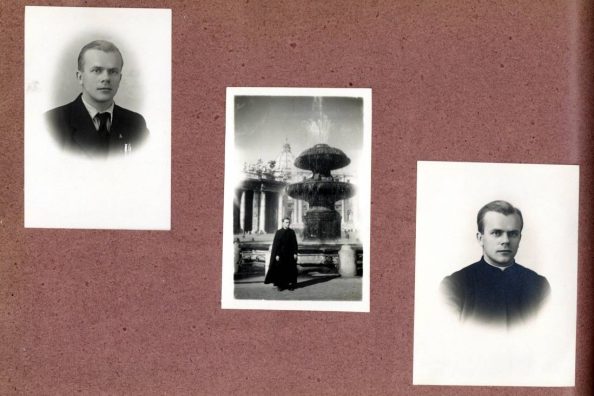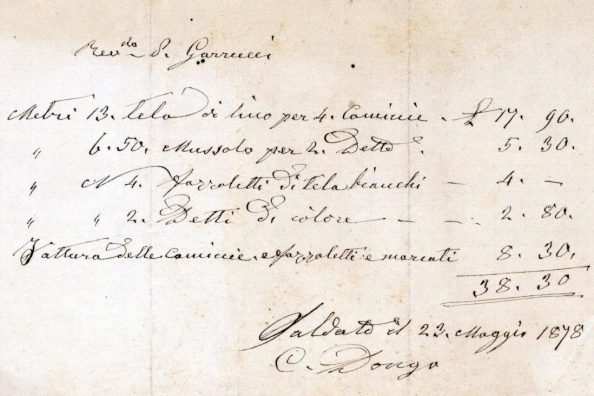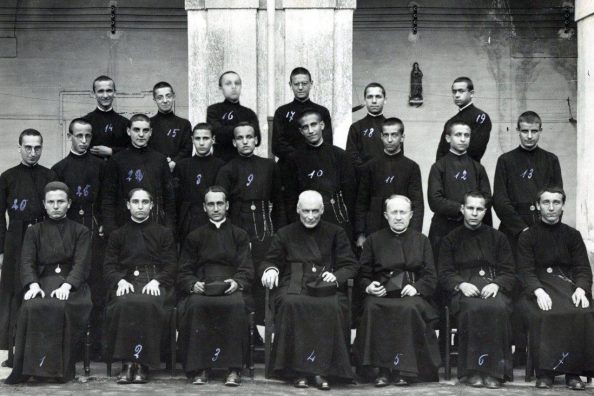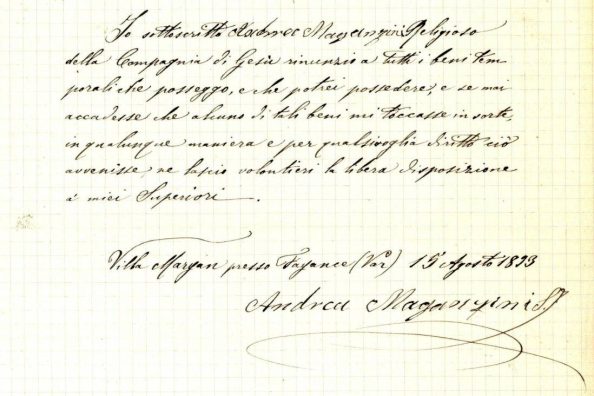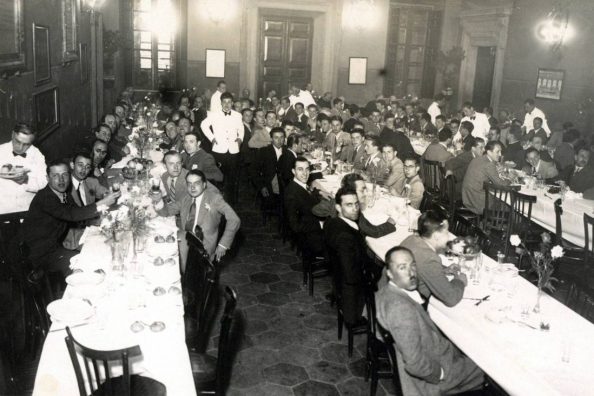The homilies of a Jesuit

What did a Jesuit, who lived in the first half of the 20th century, talk about in his homilies? What topics was he most interested in? With today’s in-depth study, we answer this question thanks to a collection of homilies written by Fr Giuseppe Massaruti.
The source
Usually among the papers of deceased Jesuits we have mainly notes and notebooks containing references to apostolic work, teaching or their own personal reflections. In some cases, we also have their diaries, drafts of books or compositions and homilies.
Our historical archives preserve the personal archive of Fr Massaruti, which was probably located at the Massimiliano Massimo Institute at the Terme when the Jesuit died, where he died in 1958.
The fund was later transferred to the archives, possibly when the Massimo Institute moved from the centre of Rome to EUR. The Jesuit’s archive consists of his personal diaries, homilies, notes, drafts. He is one of the 90 Jesuits of the Roman Province for whom we possess personal papers, compared to the approximately 3005 individuals for whom only the personal file remains.
We have already dedicated some insights into Fr. Massaruti and his brother Carlo, who was involved in the spiritual care of the military and was the recipient of a special gift from Pope Pius X.
Giuseppe Massaruti
P. Massaruti, a literature teacher at the Maximus for decades, was also a spiritual assistant and retreat guide for many brothers, especially for his students, many of whom remained in contact with the Jesuit into adulthood. They often asked Fr Massaruti to officiate at their weddings, which is why we now have photos of some of these marriages in our archives.
Homilies
We possess dozens of handwritten homilies by the Jesuit, recited on various liturgical feasts: Easter, Palm Sunday, Christmas, and Epiphany.
The titles indicate the themes dealt with: “Getting to know Jesus Christ”, “Loving Jesus Christ”, “the parable of the sower”, “the wheat and the weeds”, work and Nazareth, “Jesus in the desert”, “penance”, “advent”, “Jesus in the temple”, “the Holy Family of Nazareth”.
A small nucleus is dated, consisting of homilies dating from between 1913 and 1921, but most are undated.
The homilies consist of several pages. We are in the decades before the Second Vatican Council, the mass is still in Latin but the preaching is in the vernacular and takes up more time than today. Furthermore, Jesuit preaching was particularly popular at triduums, when crowds of people filled the churches officiated by the Society and often also the surrounding squares and streets.
It seems that Fr Massaruti was also known for his oratory. We can appreciate the Jesuit’s style in one of his homilies, the one read on Palm Sunday:
The Passion is only a few days away. The golden storm is gathering over the Redeemer’s head. Already, it is not only the occult delivery of the Sanhedrin where the high priest has declared that Christ must die to save the people; but manifest indications of persecution have broken out here and there. […] It is established: Christ will die. But as sometimes as the hurricane is preparing, between cloud and cloud there shines vividly a ray of sunshine that reminds one of joy and paints the clouds black and dense while all around Jesus is hatred. Here is a sudden burst of celebration, a triumph, a true triumph to the meek king who enters his city. Thus willed God the father. The voice of Heaven had told him “Et clarificavi et iterum clarificabo” Here is a sign of the great glory that awaits him after death: Palm Sunday.
Look at the little party approaching from Bethphage towards the holy city: it is the host of the king preparing with his faithful, and the king rides on a humble donkey on which the disciples have laid down their garments in place of a saddle: modest and splendidly fulfilling the prophecy. “Ecce rex tuus venit mansuetus et pauper. […] Jesus comes, was the cry. The prophet comes who has healed, resurrected, consoled. The friend of the poor or of children comes; Jesus comes.
In addition, up the slope of the olive grove the people were tearing off the broad palm leaves and the olive branches and waving them festively as they followed the Messiah. Meanwhile the applause grew. Benedictus. […]
The church today gathers the ever-resounding echo of that jubilation and applause, it too places the green branches of the palms and olives in the hands of its people and adorns the altar, and the temples still hear the songs “Hosanna” and “Benedictus”.
In addition to the homilies, we also keep the spiritual notes, the notes taken for the spiritual exercises that the Jesuit gave to pupils, teachers and the faithful, and above all his personal diaries.
Maria Macchi

